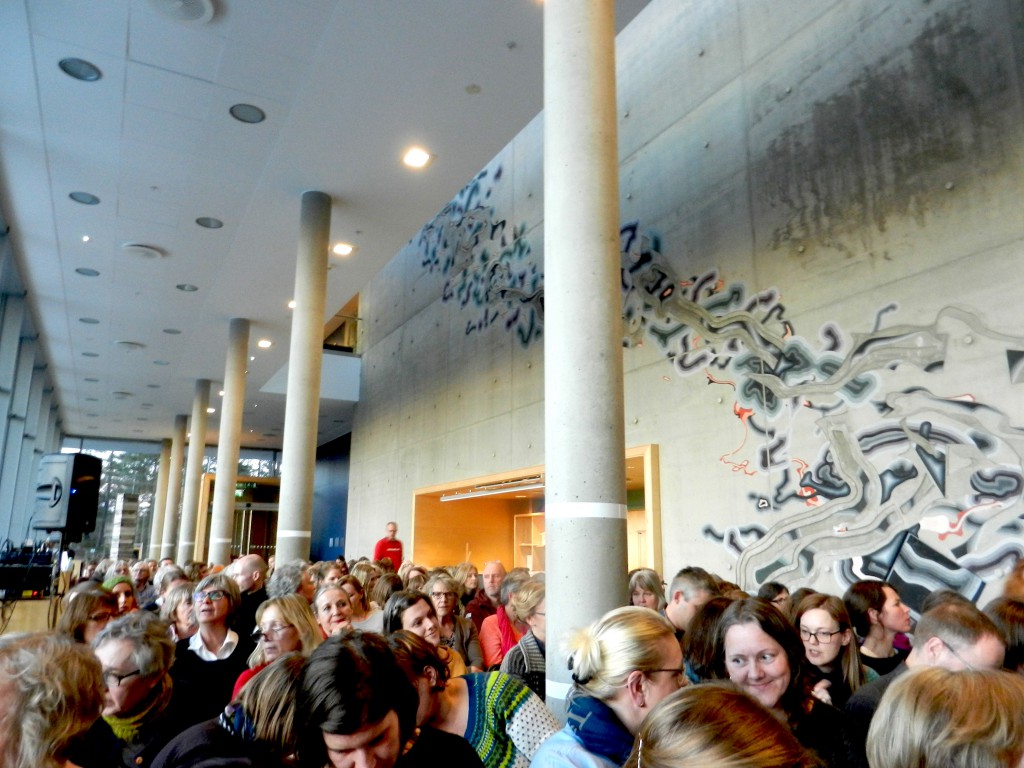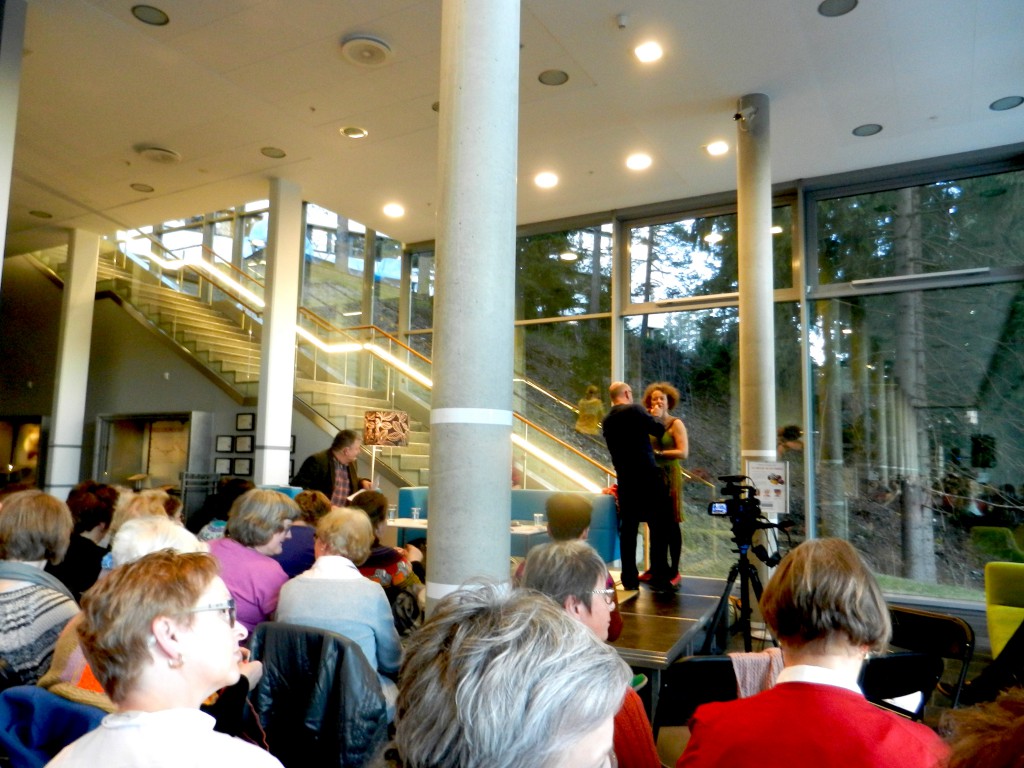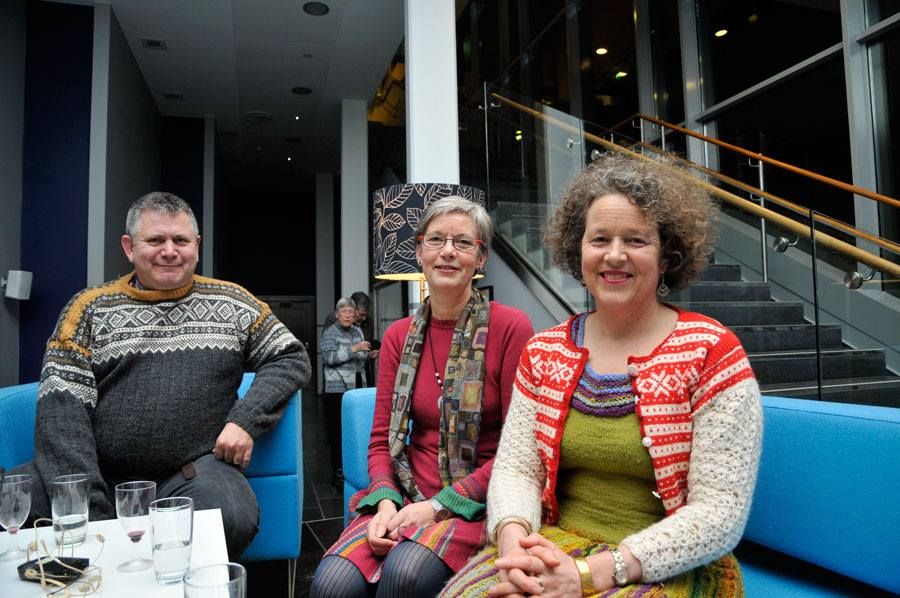 “To rette en vrang“/Knit two, purl one, is not only my Norwegian book title but also the name given to a talk I went to at Riksarkivet/The National Archives last Tuesday. Why has knitting become so popular in Norway was the question asked and how did it start? “The knitting wave is washing across the country. People are taking out their knitting everywhere, they blog about it and exchange knitting tips across the continents. But how much do we actually know about our own knitting history? Norwegian textile- and clothing history is in focus this evening.” Journalist and passionate knitter Kristian Elster lead the talk with Curator at KODE – The Art Museums in Bergen – Anne Britt Ylvisåker and Ethnologist Ingun Grimstad Klepp. The simple answer from Ylvisåker is that we know very little about our own Norwegian knitting history because the definition of the term “knitting” is so wide; it include numerous other handicraft techniques and in addition the fragments that are found are not necessarily made by Norwegians. Above is the well filled entrance hall of the impressive building at Sognsvann in Oslo, see the facade here: www.statsbygg.no. It came as no surprise, to me, that this was a new attendance record in their series of talks.
“To rette en vrang“/Knit two, purl one, is not only my Norwegian book title but also the name given to a talk I went to at Riksarkivet/The National Archives last Tuesday. Why has knitting become so popular in Norway was the question asked and how did it start? “The knitting wave is washing across the country. People are taking out their knitting everywhere, they blog about it and exchange knitting tips across the continents. But how much do we actually know about our own knitting history? Norwegian textile- and clothing history is in focus this evening.” Journalist and passionate knitter Kristian Elster lead the talk with Curator at KODE – The Art Museums in Bergen – Anne Britt Ylvisåker and Ethnologist Ingun Grimstad Klepp. The simple answer from Ylvisåker is that we know very little about our own Norwegian knitting history because the definition of the term “knitting” is so wide; it include numerous other handicraft techniques and in addition the fragments that are found are not necessarily made by Norwegians. Above is the well filled entrance hall of the impressive building at Sognsvann in Oslo, see the facade here: www.statsbygg.no. It came as no surprise, to me, that this was a new attendance record in their series of talks.
 I did not even sit on the first row as you can see from above. Riksarkivet have their own You Tube Channel where you can watch all their “I en sofa på Arkivet” talks in Norwegian, including this one: www.youtube.com. What we do know is that knitting in Norway was done in the 1500 century, and began with poor people knitting socks out of necessity. It was not until the early 1900 century that it became more popular and that the gentry began knitting, but this time in fine cotton and delicate items to prove that this was not because it was an essential item but merely for pure pleasure. Just as knitting is today, and the popularity of all the different Facebook groups like “Koftegruppa” was mentioned due to its large number of members, with more than 36 000 members. Klepp does not believe it is only a wave but something much more permanent and sustainable. Knitters will also become even more aware of the origin plus material of their yarn in the future, predicted Klepp, and compared it to recent food discussions. Ylvisåker believes the rise of the knitting popularity began in the post war years with the nation building. At a time when the enjoyment of the outdoors flourished and dexterity was in demand. Knitting was no exception hence the knitting patterns became public.
I did not even sit on the first row as you can see from above. Riksarkivet have their own You Tube Channel where you can watch all their “I en sofa på Arkivet” talks in Norwegian, including this one: www.youtube.com. What we do know is that knitting in Norway was done in the 1500 century, and began with poor people knitting socks out of necessity. It was not until the early 1900 century that it became more popular and that the gentry began knitting, but this time in fine cotton and delicate items to prove that this was not because it was an essential item but merely for pure pleasure. Just as knitting is today, and the popularity of all the different Facebook groups like “Koftegruppa” was mentioned due to its large number of members, with more than 36 000 members. Klepp does not believe it is only a wave but something much more permanent and sustainable. Knitters will also become even more aware of the origin plus material of their yarn in the future, predicted Klepp, and compared it to recent food discussions. Ylvisåker believes the rise of the knitting popularity began in the post war years with the nation building. At a time when the enjoyment of the outdoors flourished and dexterity was in demand. Knitting was no exception hence the knitting patterns became public.
Above, is one of Riksarkivet’s photos of Ingun Grimstad Klepp wearing a Fanakofte with crocheted sleeves, Anne Britt Ylvisåker and Kristian Elster wearing a Marius Genser. Klepp told us how she rescues UFO’s found at flea markets, imagines what the knitter’s intention originally was before it was abandoned, and then decides how to re-design it, all on a much smaller scale than artist Kari Steihaug did for her book, see my review here: Archive: The Unfinished Ones. After the talk had finished questions from the audience were answered, but not all were equally easy to answer like when did our tradition with using a sewing machine before steeking – cutting open a colorwork body to make a cardigan begin? Read more about Klepp and her book Ren Ull/Pure Wool here: Ulluka Campaign for Wool Week. It was an enjoyable evening spent knitting in the company of many others.

